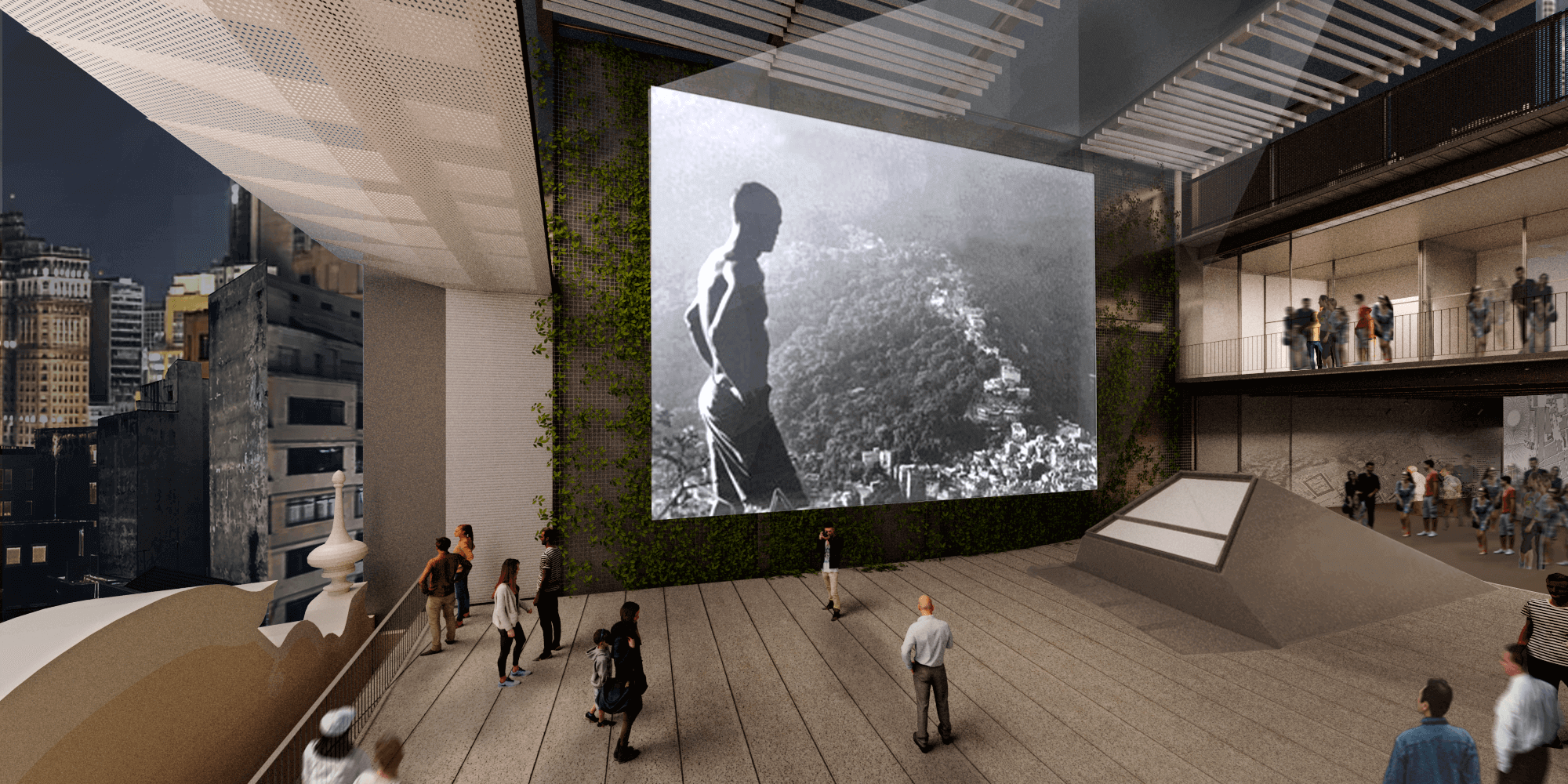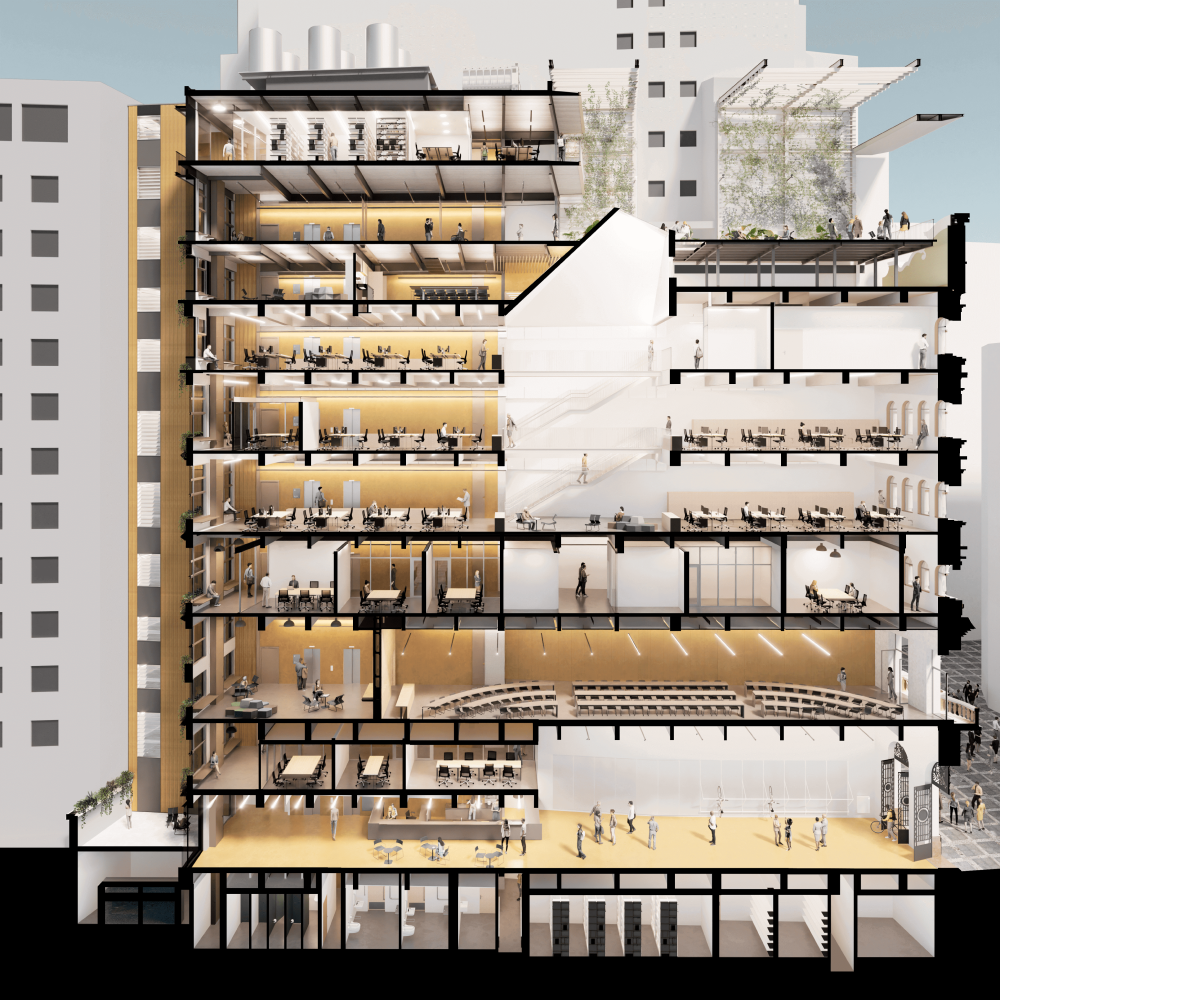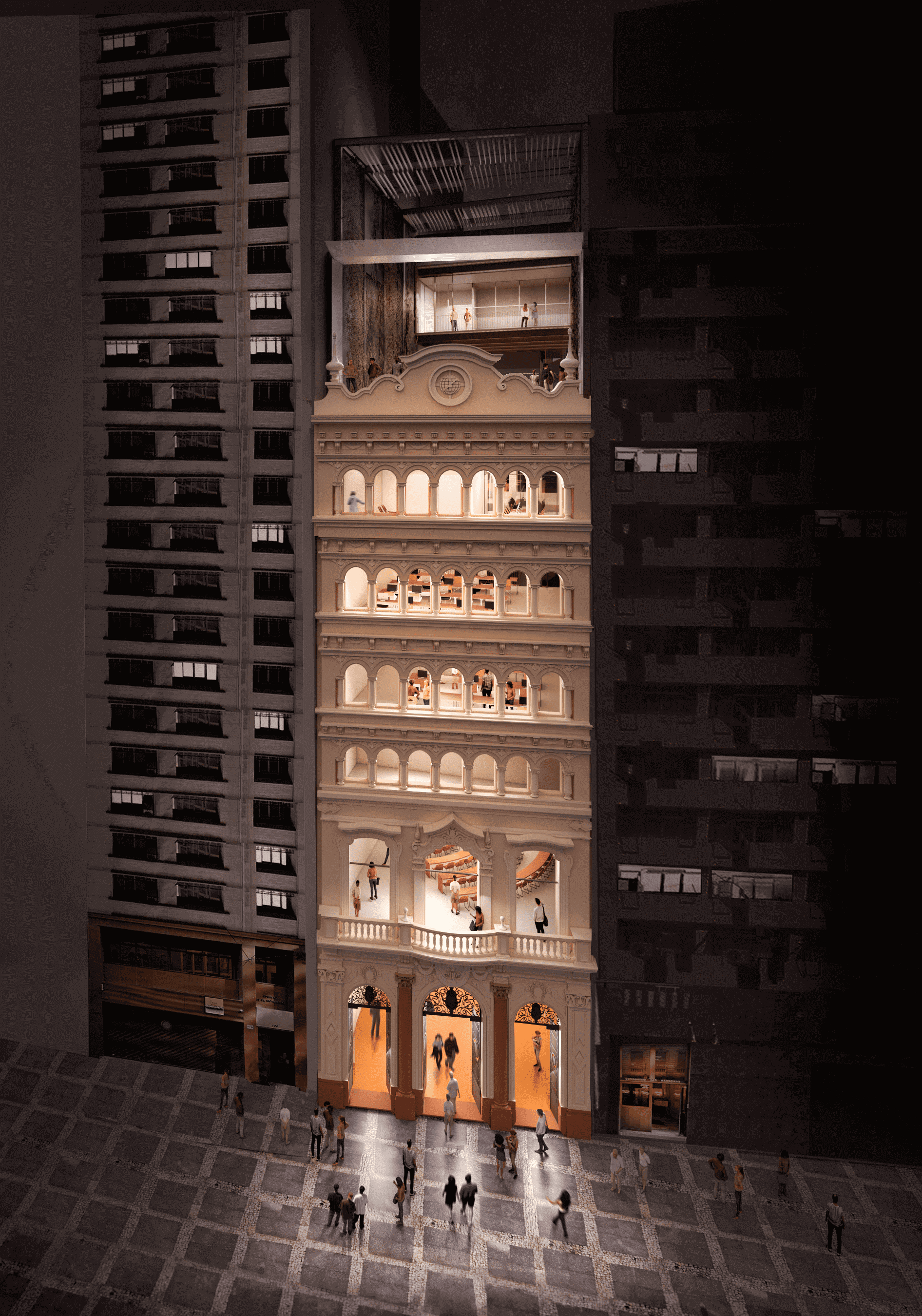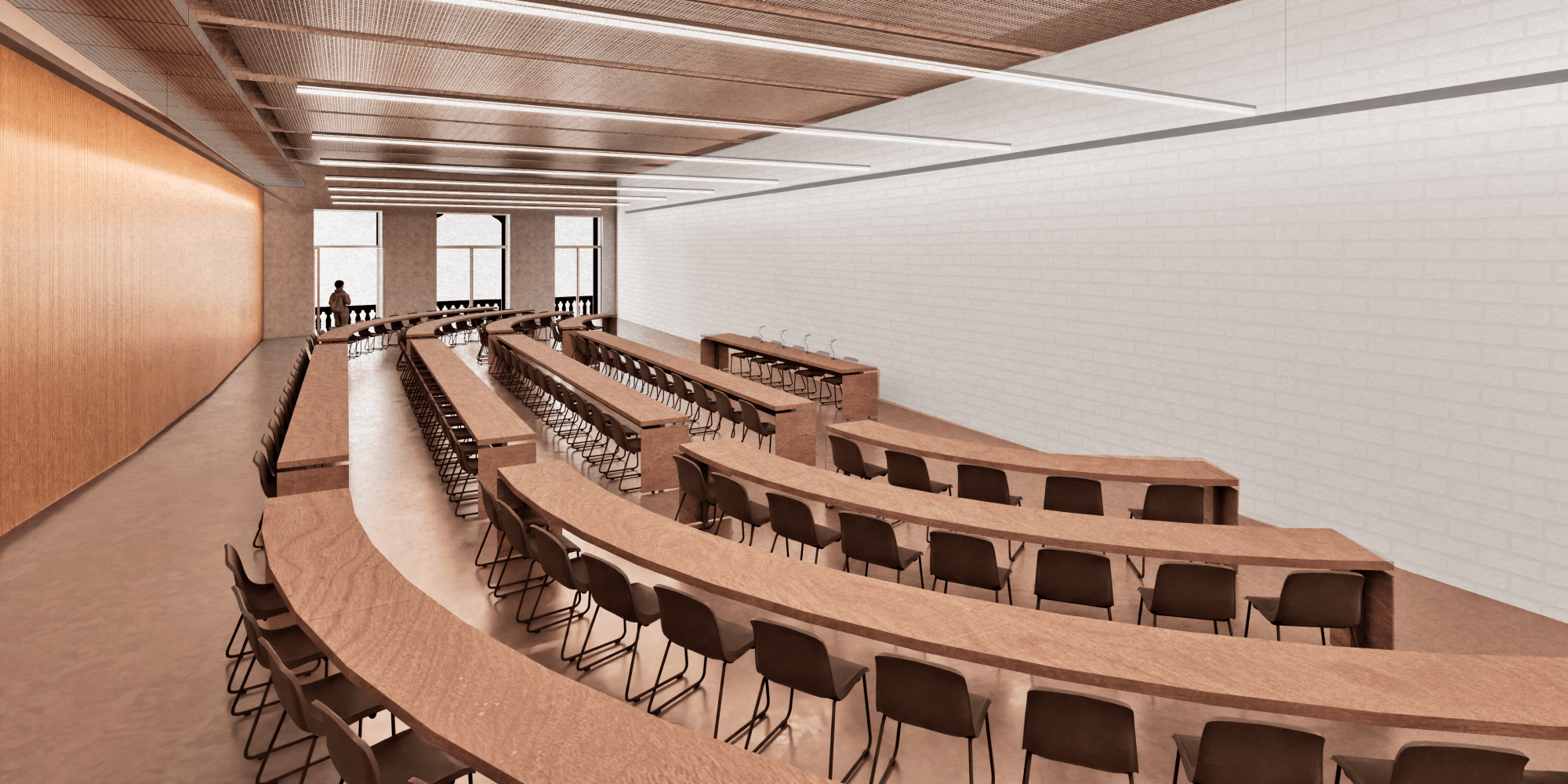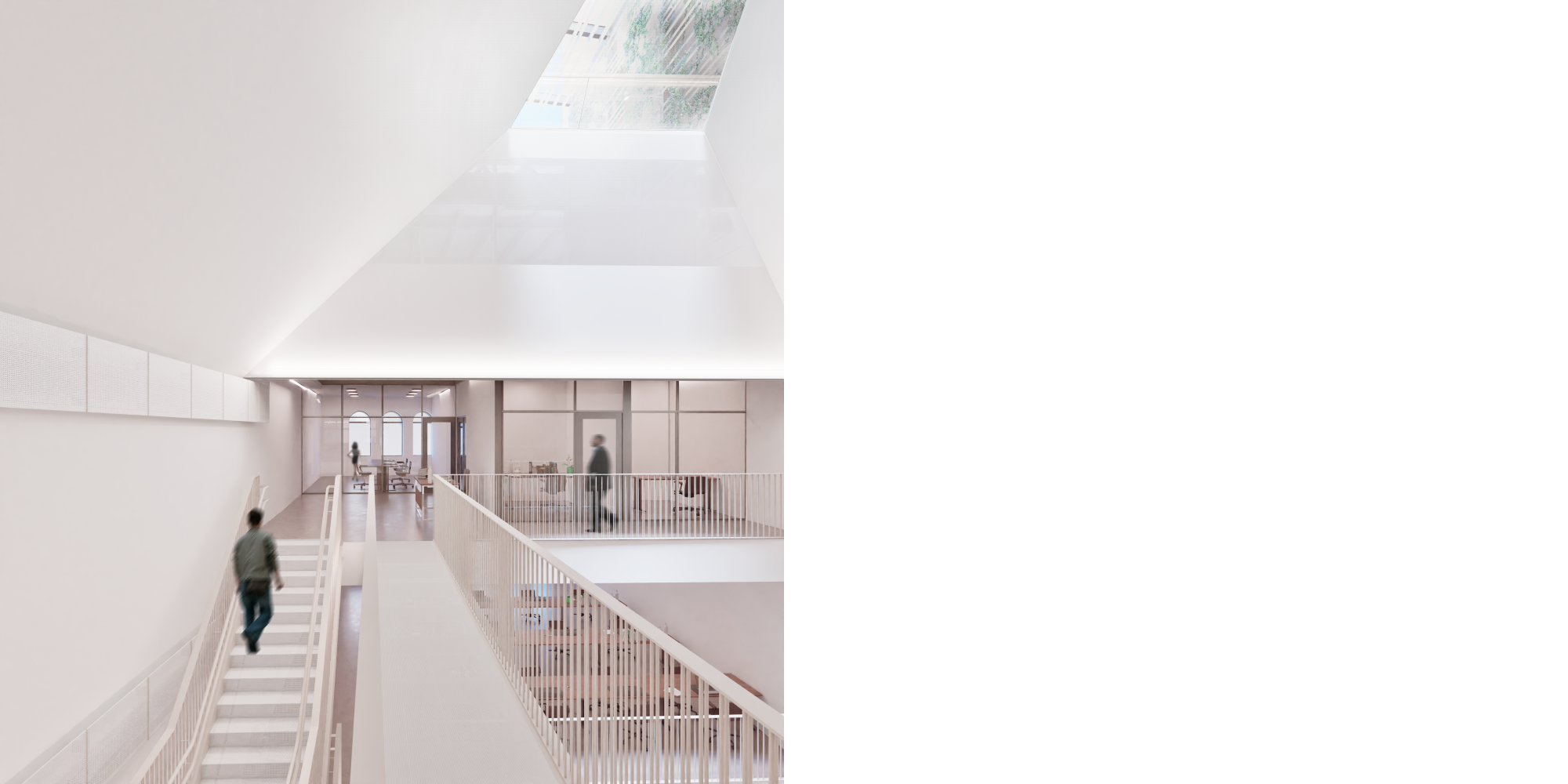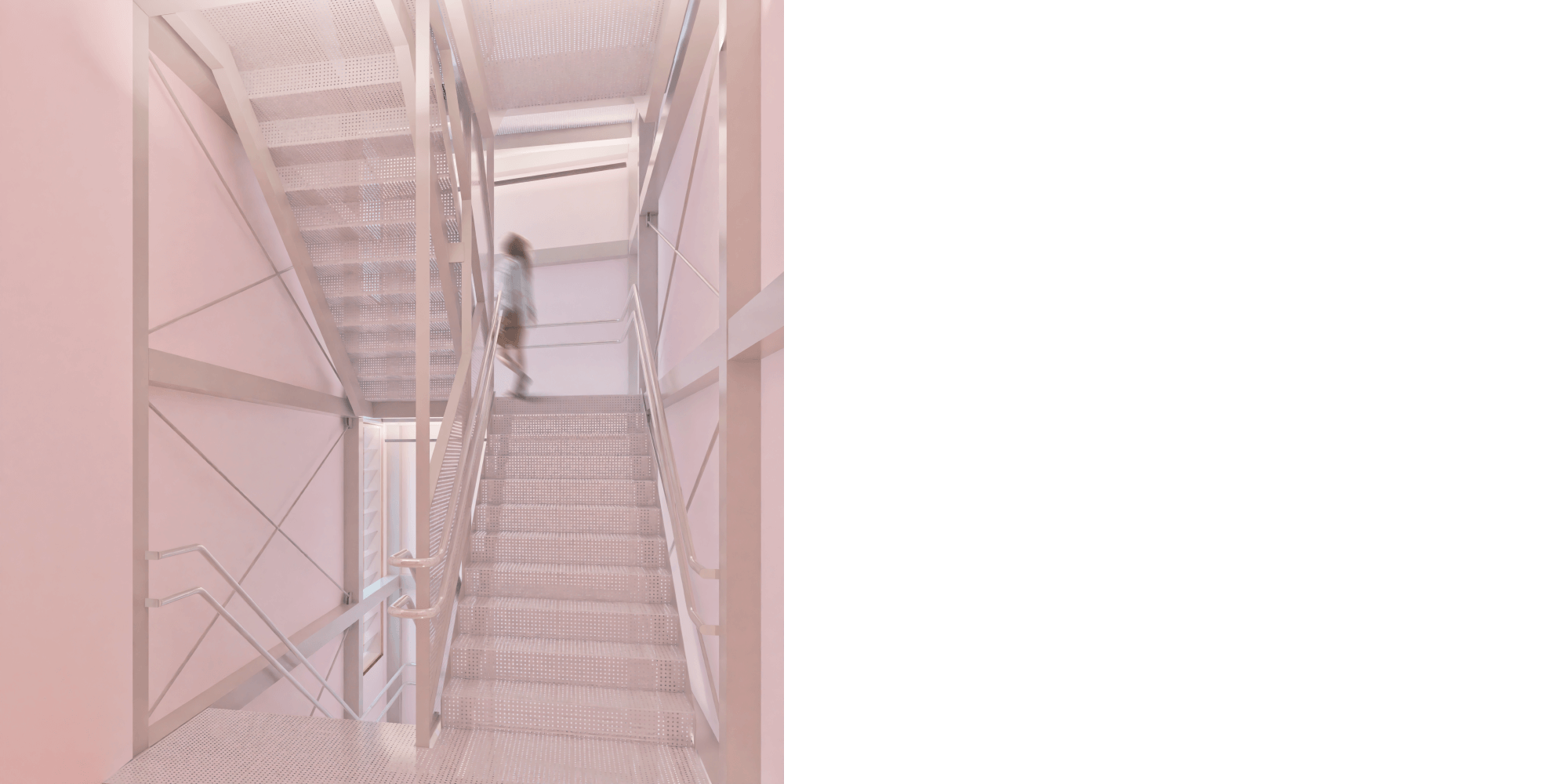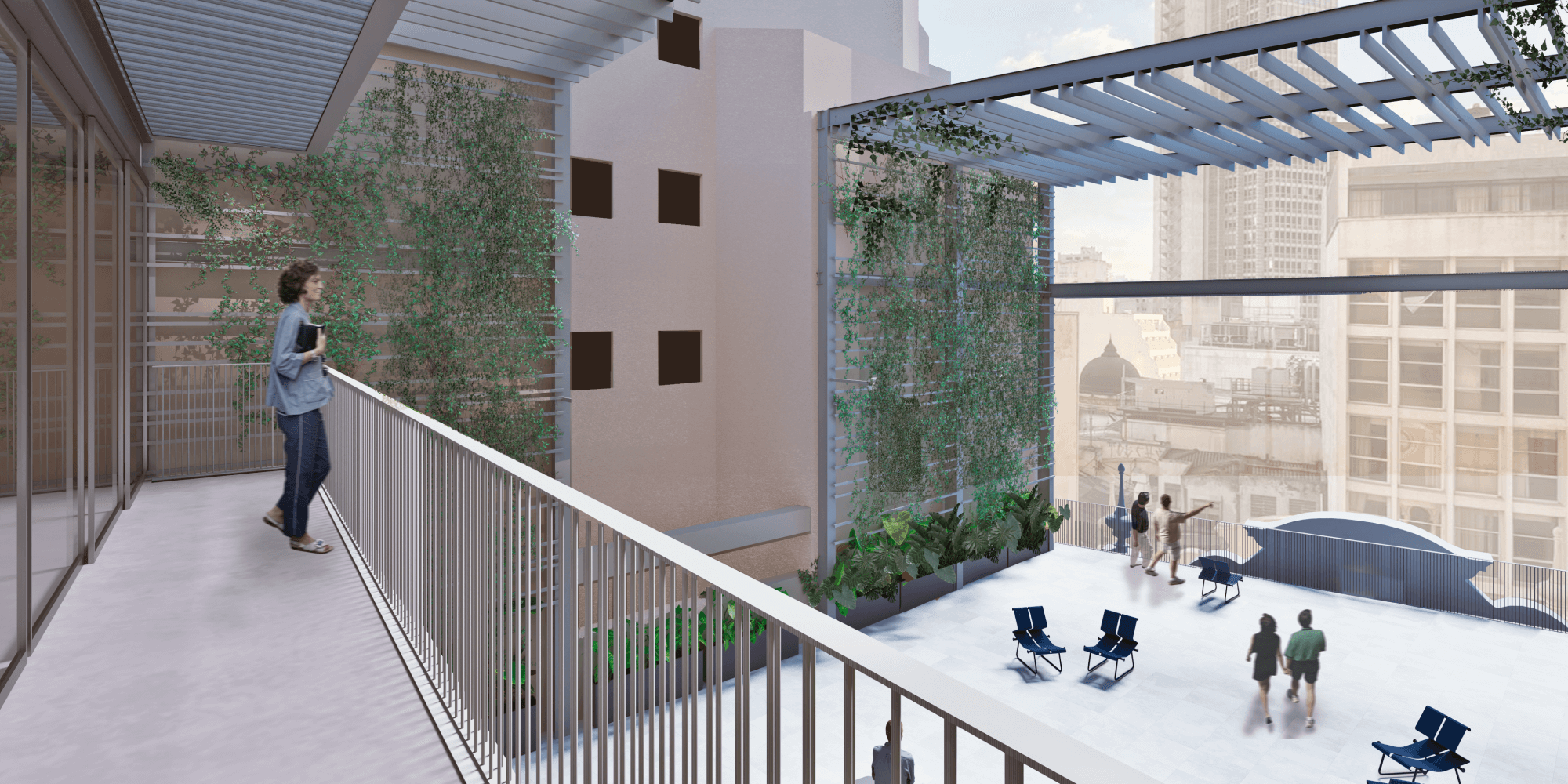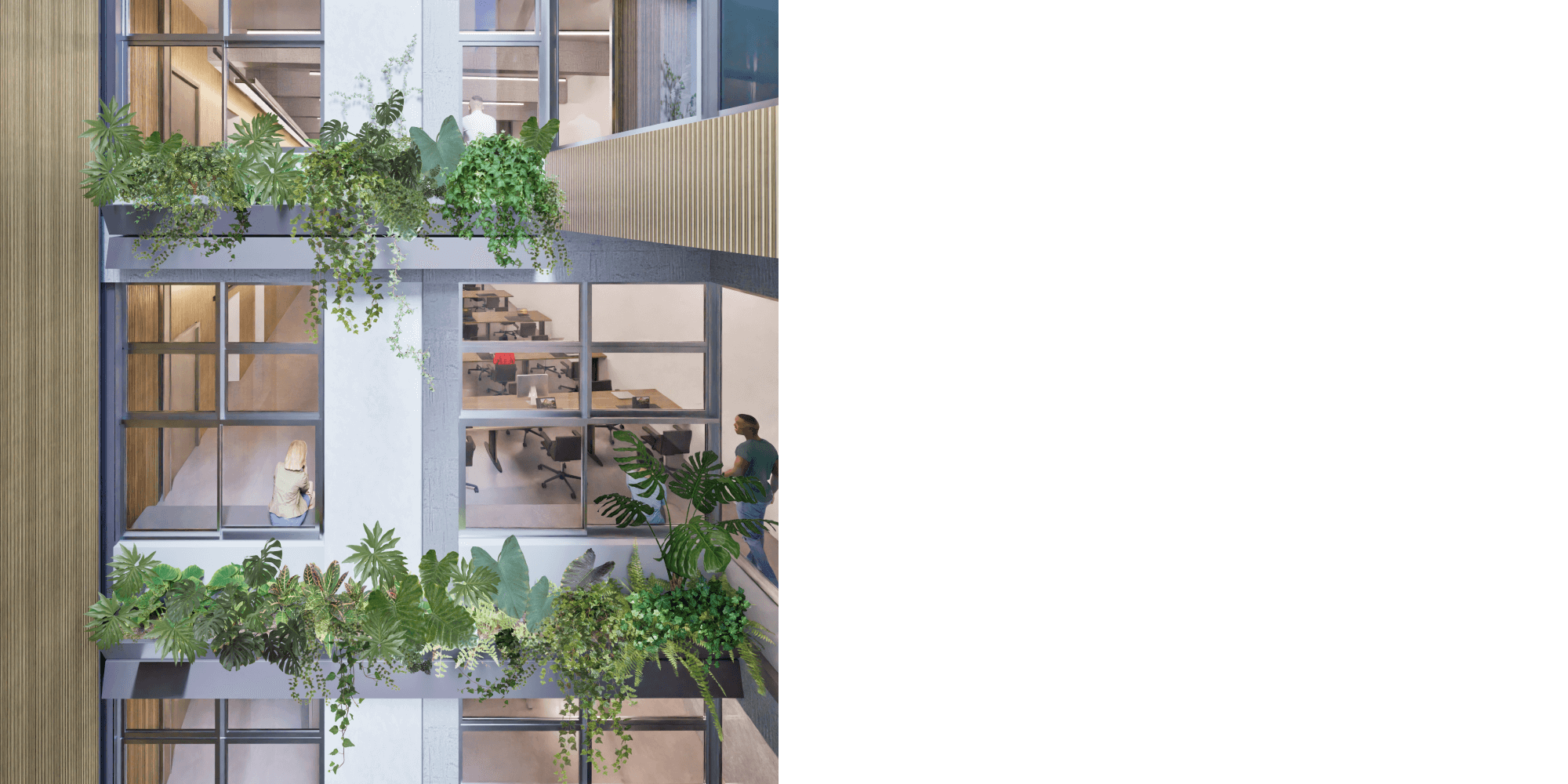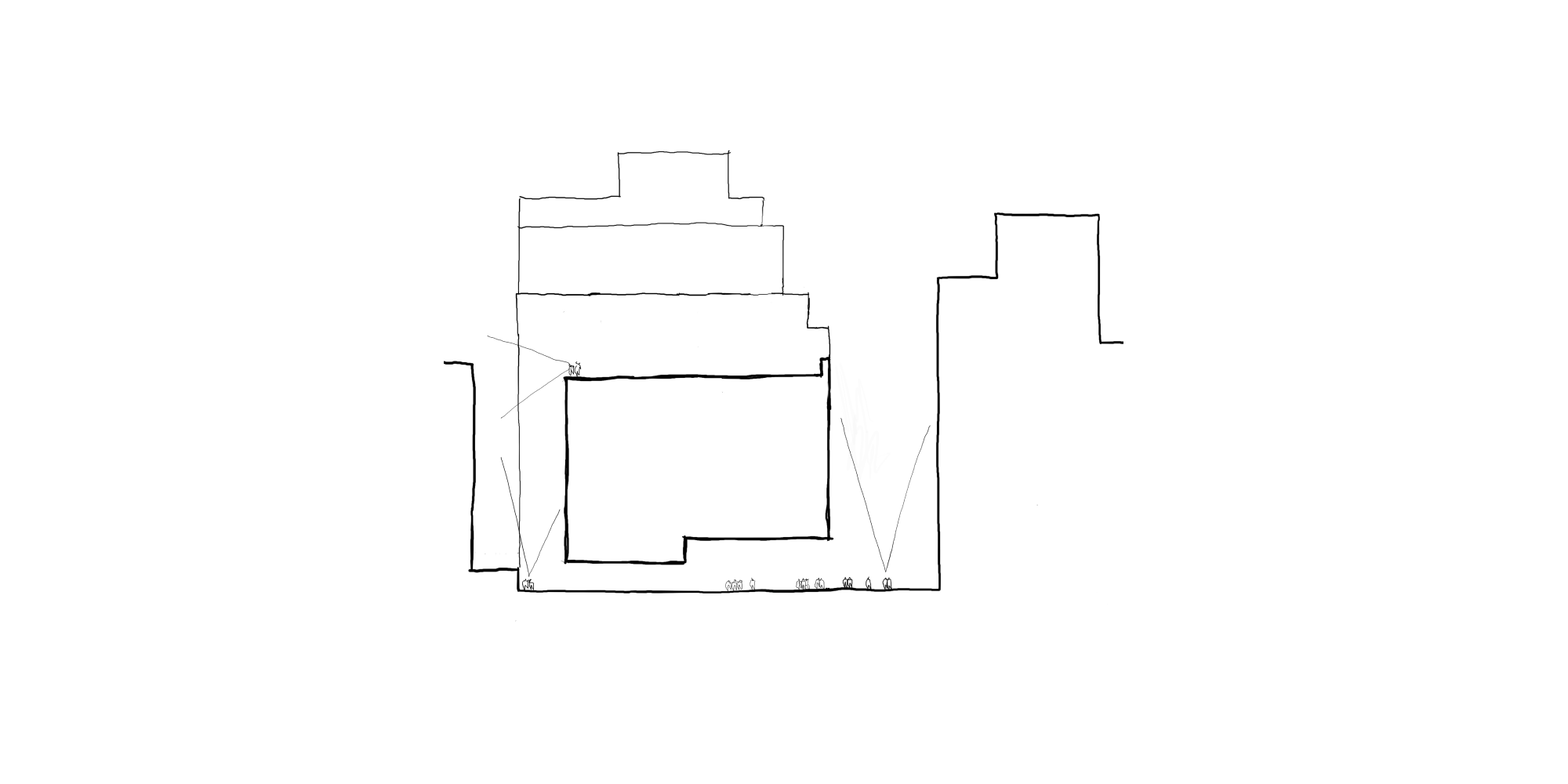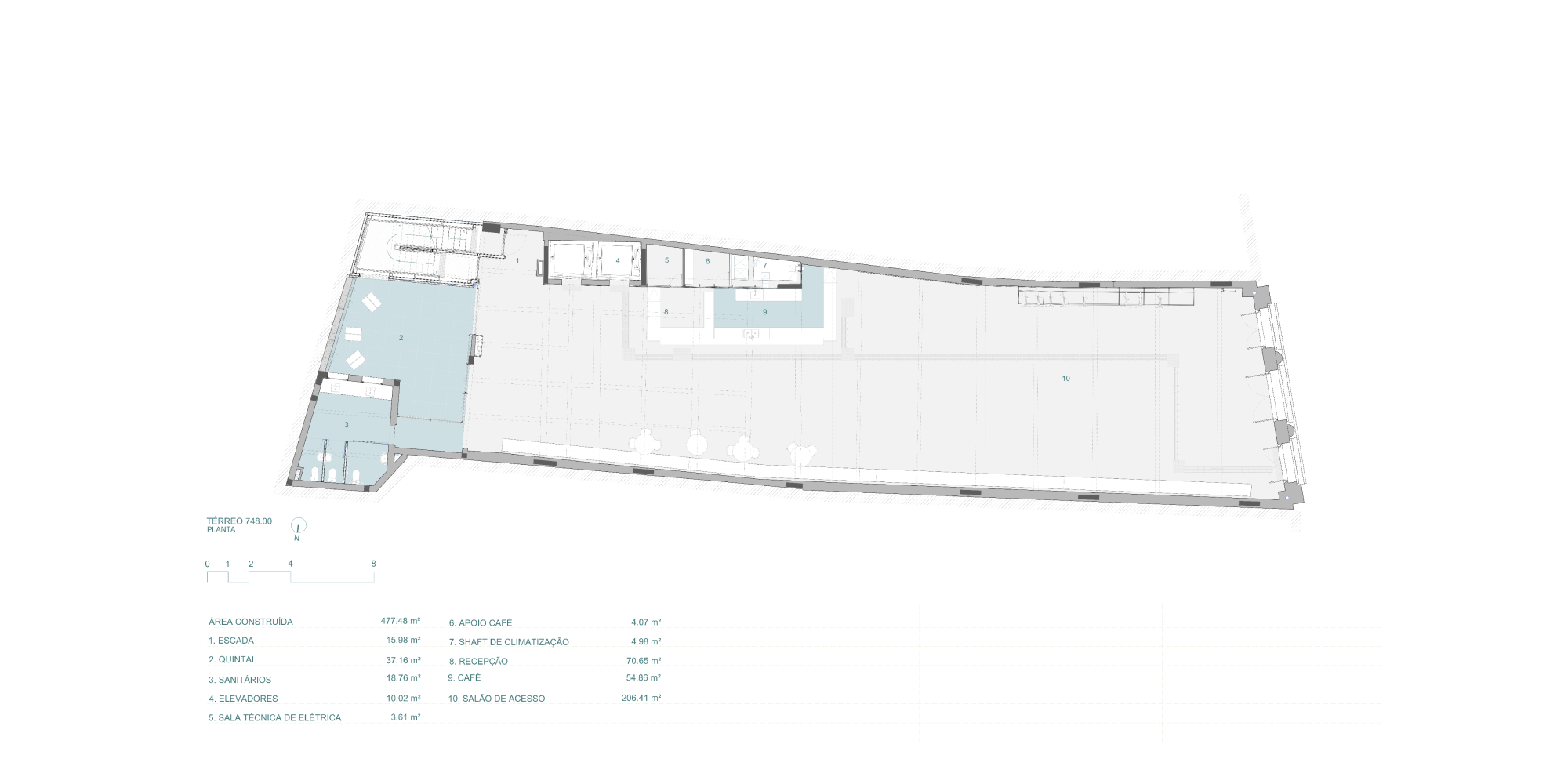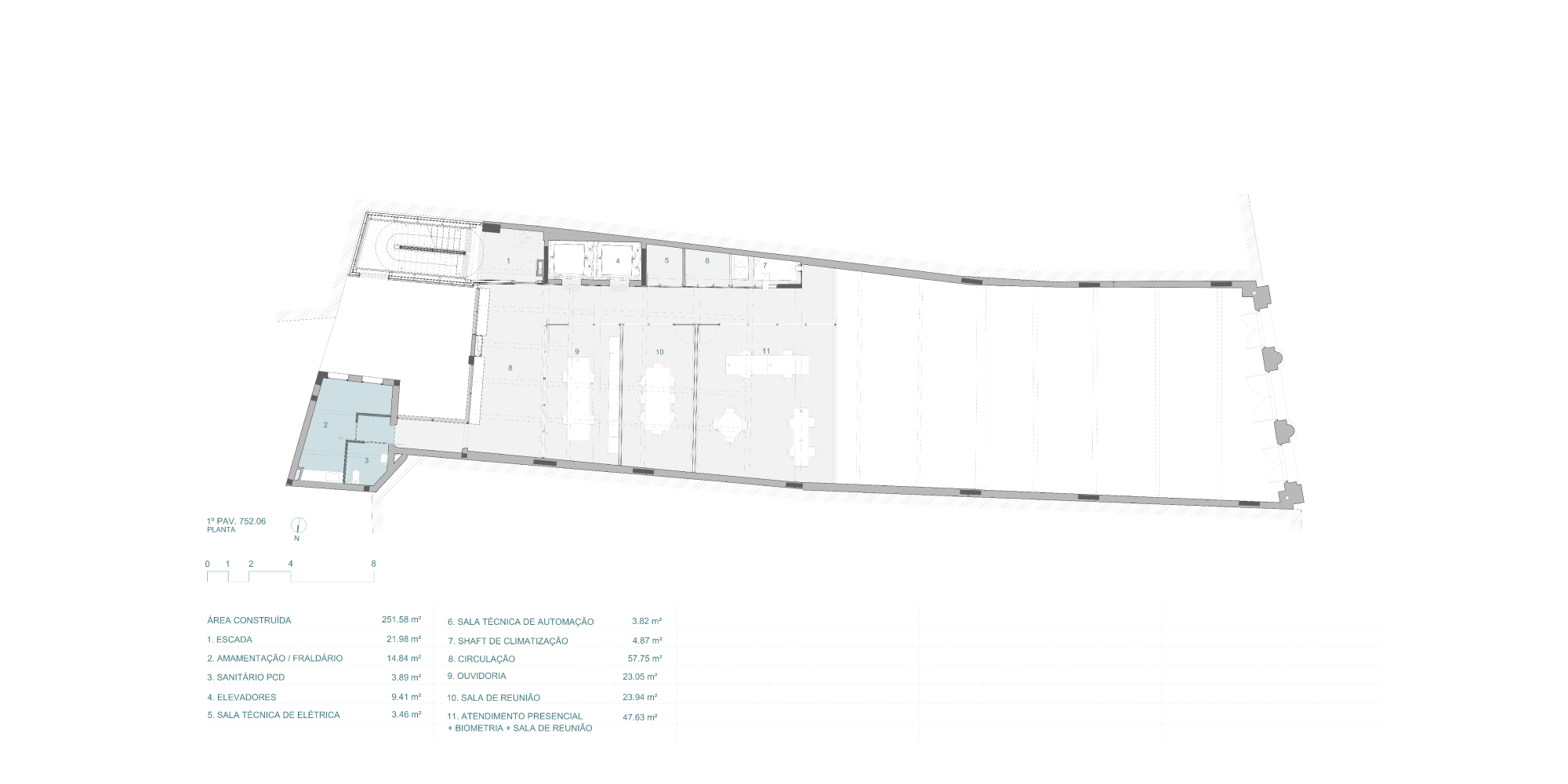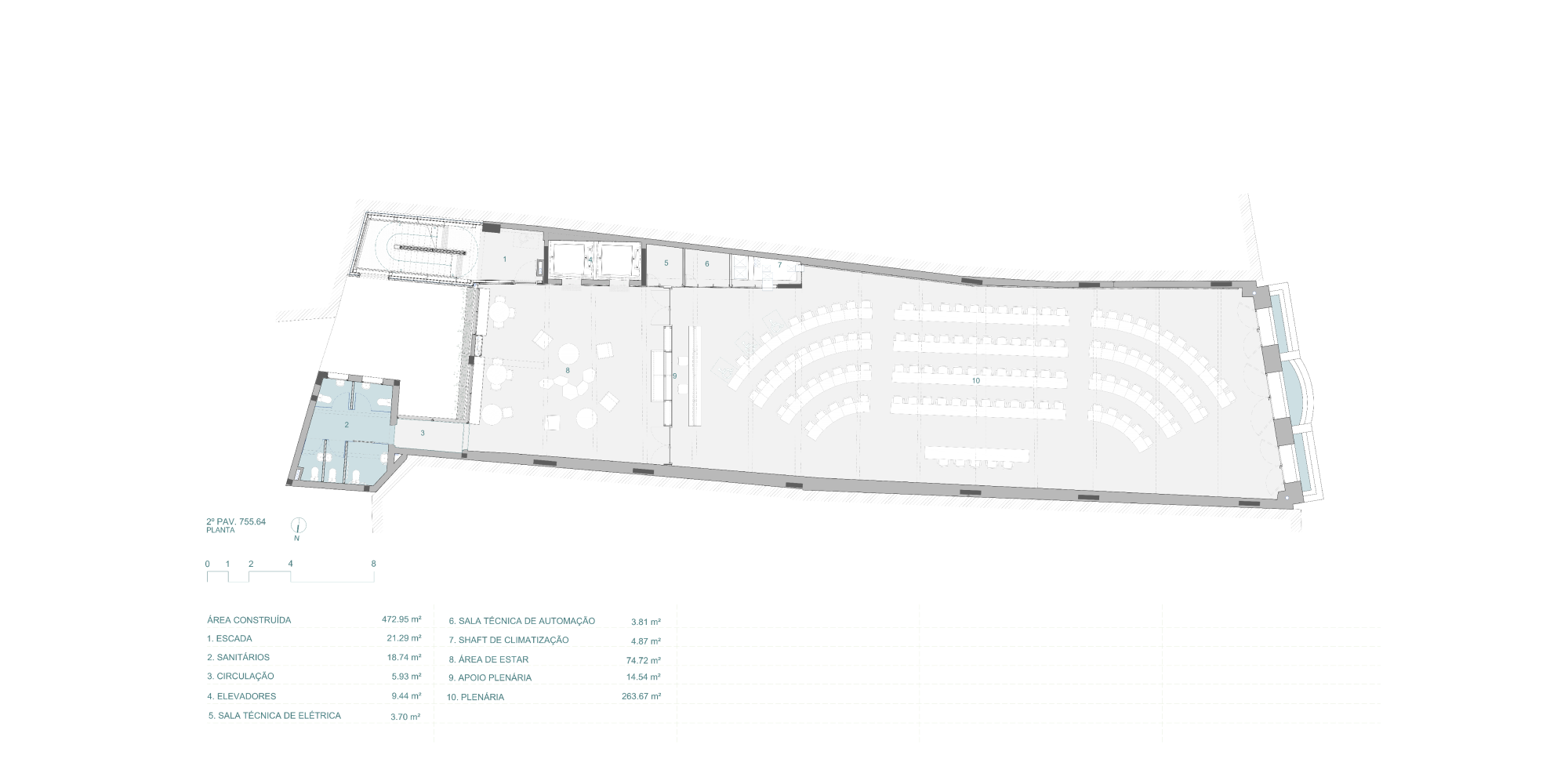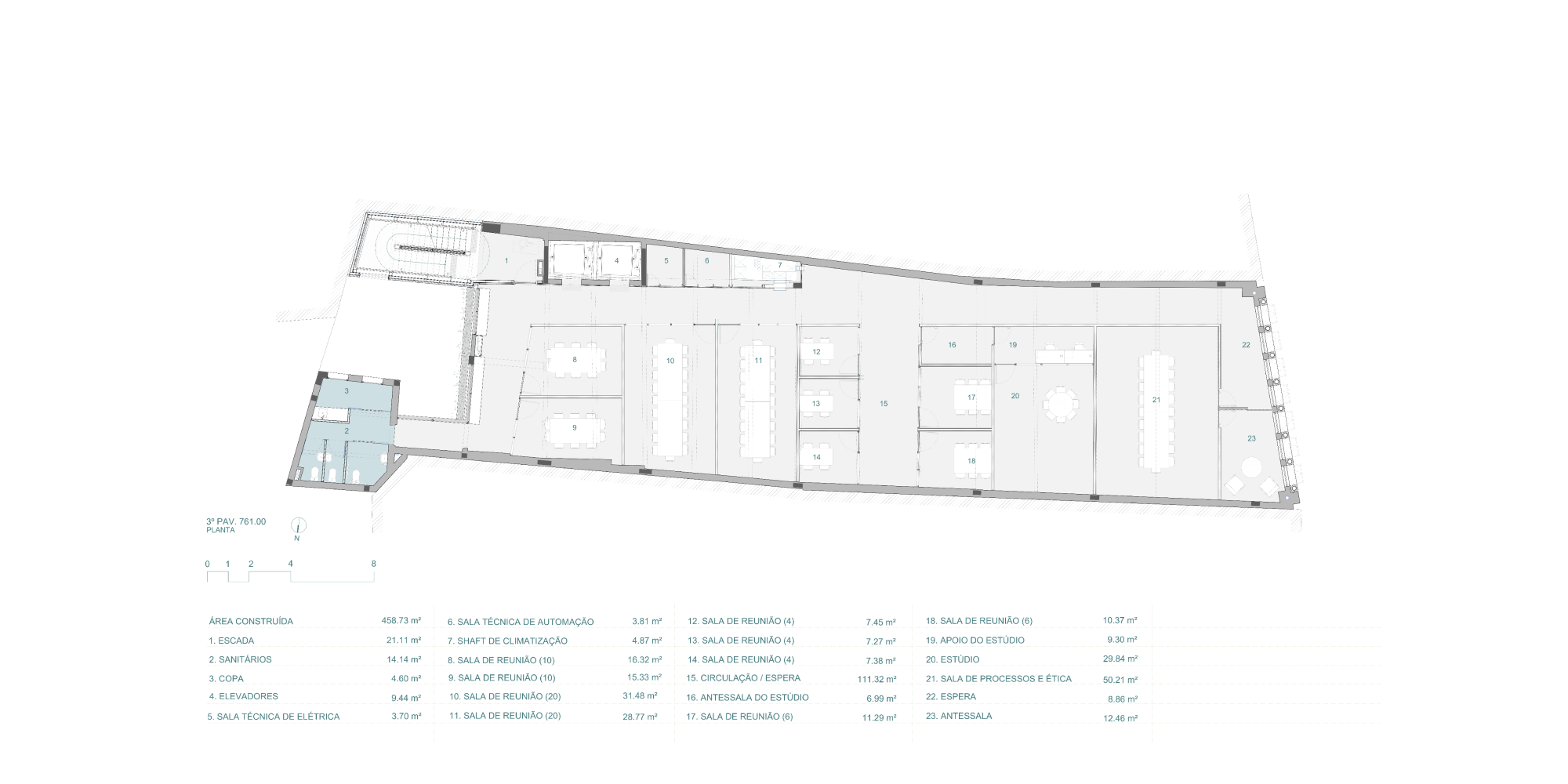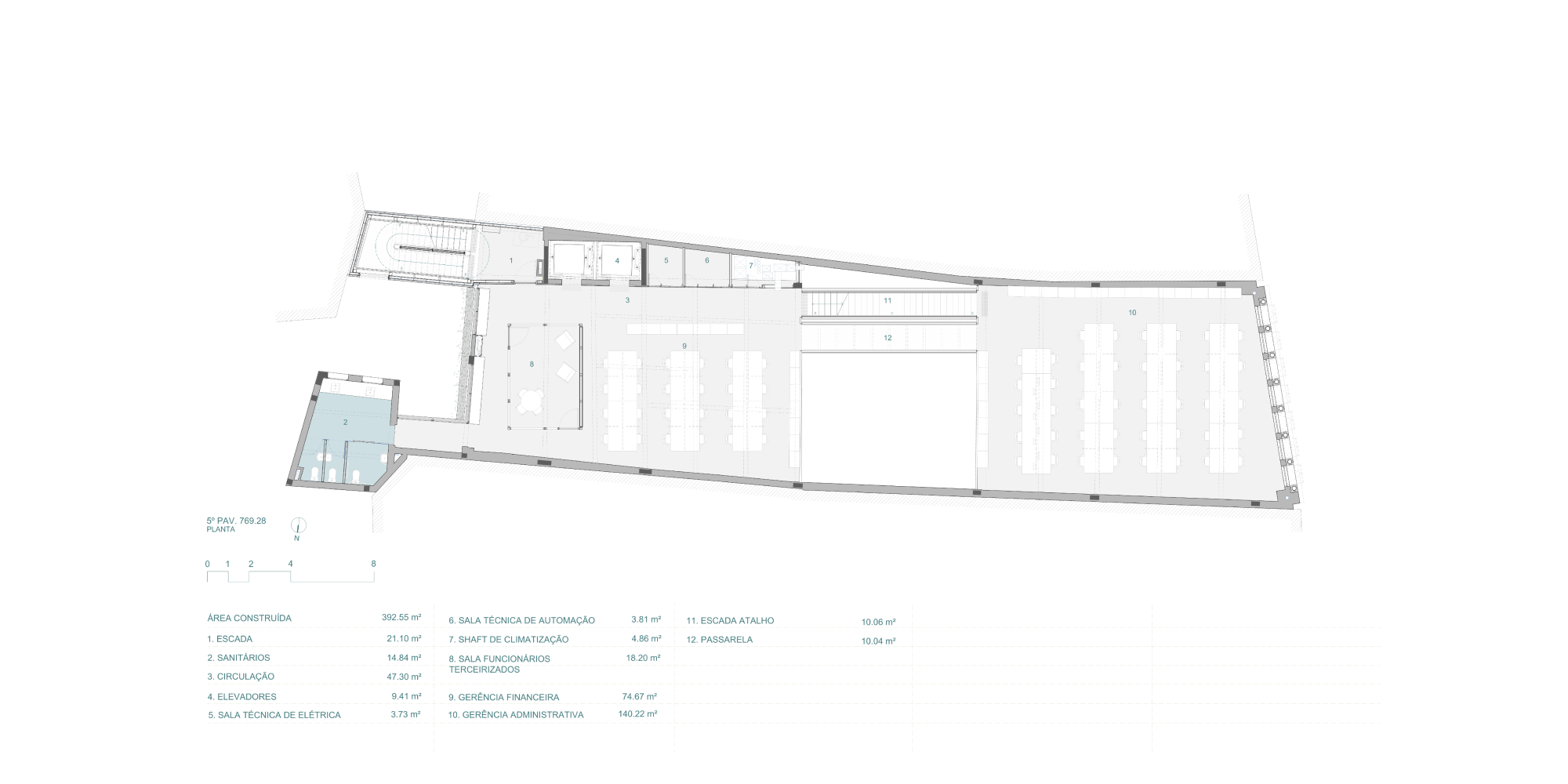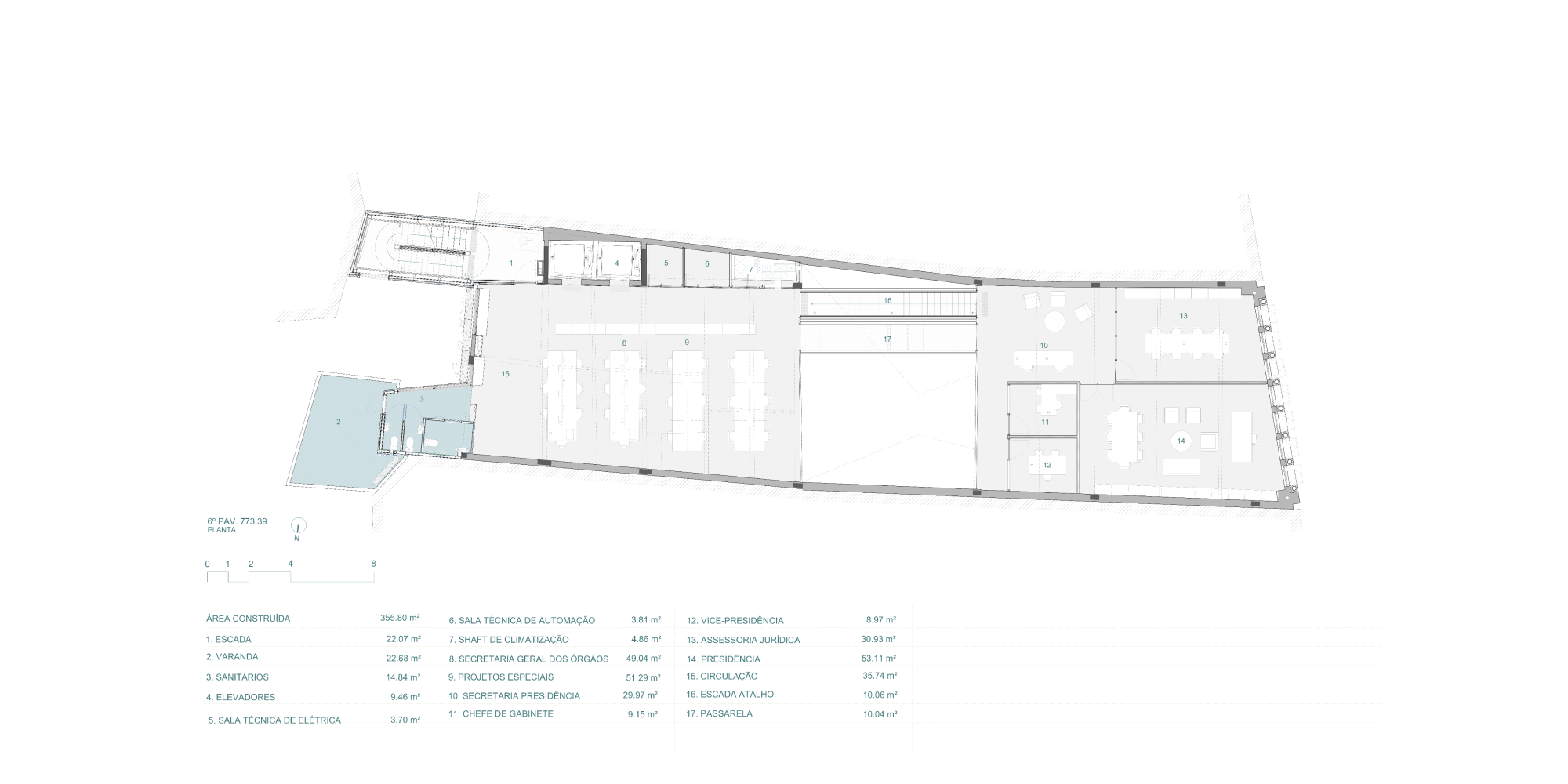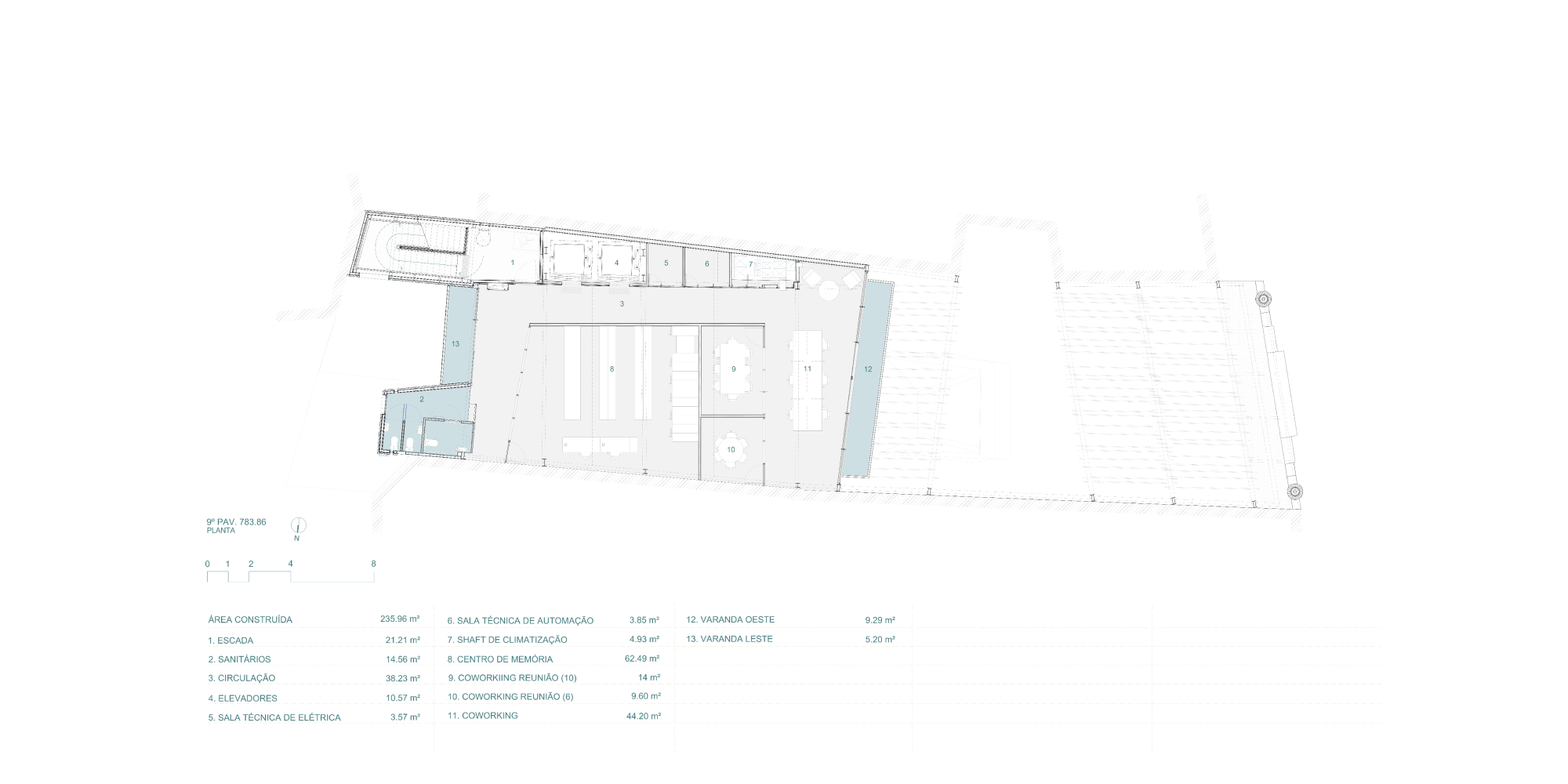Located on Rua XV de Novembro, in the city center's historic triangle, CAU São Paulo's new central office will be the result of the renovation of an existing historical building, designed by Ramos de Azevedo and built in 1920 to house the headquarters of a Portuguese bank. The original building, in the eclectic baroque style, has undergone numerous transformations to date, the most significant of which was in 1979, when three floors were added to the building, by replicating the typology of the third floor on the upper floors, and relocating the pediment at the top of this new building.
Given the successive interventions the building has undergone, the project aims to improve the building's environmental condition through specific interventions. At present, the building is characterized by an excess of enclosed and poorly accessible spaces, with little natural light and no ventilation. Rather than adding new built volumes, the main actions proposed start with the construction of empty spaces and openings to the outside through two premises: the liberation of the east façade through the demolition of the existing stairs; and the liberation of a central opening, crowned by a skylight.
This premise dialogues directly with another of equal importance: the intention to make the most of the existing building's potential. This vision favors a set of decisions regarding the policy to be adopted for the finishes, the treatment of pre-existing features, the layout of the installations, the use of constructive elements and other design decisions that end up reinforcing the general character intended for the project.
The installation of CAU's headquarters in Edifício XV de Novembro 194 is an affirmative action of clear symbolic significance. It reiterates the presence of architects and urban planners in the city's founding center and establishes their Council as a landmark in the territory: a place for reflection on the paths of the profession and the future of our cities. The reoccupation of a century-old building, which is characterized by the accumulation of successive layers over time, unequivocally translates this stance: the future of cities depends on our ability to reiterate their infrastructure and value their built heritage, giving it renewed meaning.

